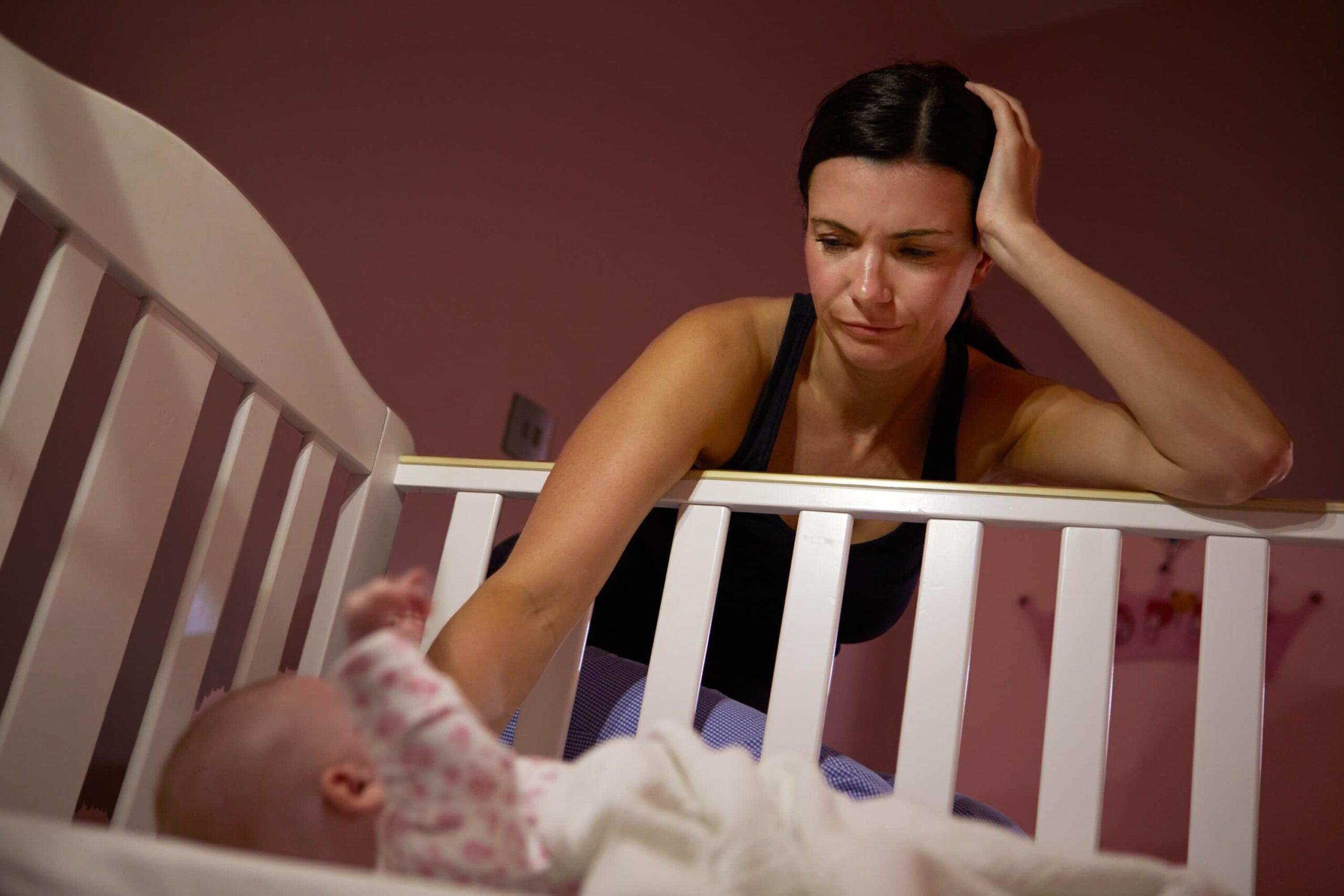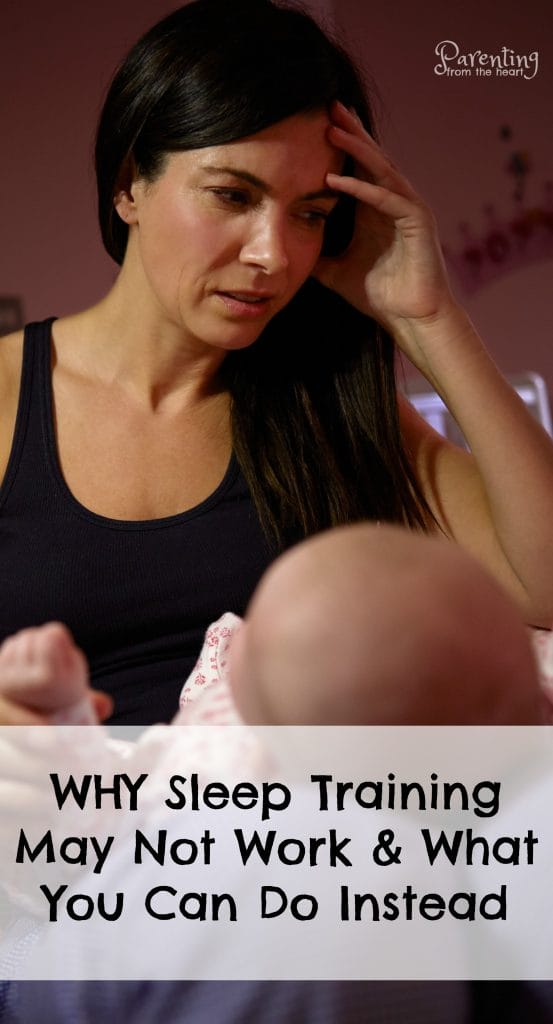When it comes to baby sleep, it seems society’s expectations are too high. Find gentle ways to encourage your baby to sleep here.
In many ways, we’ve lost sight of our instincts and our perspective when it comes to baby sleep.
I assume it’s because of the pressures of a nine to five schedule, busy to-do lists, and the desire to have it all. Either way, at some point, we got this notion babies should be equipped to sleep through the night almost immediately. As a result, we’ve decided that the measure of a new mom is in her ability to have her baby sleeping through the night as soon as possible.
Even though I’m three kids into this parenting gig, I still get asked whether my baby is sleeping through the night. Thankfully, he is a good sleeper. He wakes only once or twice per night. But
When I was a new mom it seemed that each time I was congratulated on the birth of my daughter I was also met with questions addressing my failure to get my newborn to sleep. It left me feeling insecure and judged.
Fortunately, since the birth of my daughter, I’ve gotten more experience and read more about infant sleep. One main thing I’ve realized is that we’ve kind of lost our minds when it comes to the whole thing. Babies do not sleep through the night because they need the nurturing and closeness that night feedings and night snuggles provide. The reason is simple: our brain and psychosocial development rely on this level of care.
The good news?
We can maintain that closeness with our babies while gently teaching them to fall asleep and stay asleep.
“People are going to have to accept that extensive, uncomforted crying is actually risky for infants,” says Dr. Leach, a child development psychologist.
“… Dr. Teti, a professor of human development and psychology, says his work adds to a growing skepticism toward sleep training – not only that it may not work, but that it may, in turn, affect the parent-child relationship itself.” – the Globe and Mail
It’s for this reason, many methods of sleep training aren’t ideal for babies. According to research, sleep training won’t be effective for many babies. Fortunately, there are ways that, in time, will teach babies to fall asleep on their own and stay asleep.
Comforting your baby actually teaches him to learn to self-soothe.
It may seem counterintuitive to respond to each of cry when we just want our babies to sleep. However, research advises against the cry-it-out method for two important reasons. Namely, babies who are left to cry communicate less and trust their parents less. Crying is one of the only ways a baby can convey their needs. Over time, if a parent doesn’t respond to his baby’s cries, the baby will learn to stop crying. Sadly, this is because she no longer trusts her caregivers will respond to her. We want our babies to trust us because this makes them calmer.
In contrast, when a parent responds to a baby’s cries, the baby begins to understand that her parents are a secure base. The child starts to comprehend that when he cries, his caregiver will respond. This is not manipulation or a bad habit. In fact, it is how infants minimize stress hormones and begin to become more independent. Through the eyes of a baby, the more a parent responds, the more she feels confident her needs will be met. The more confident she feels, the less she’ll need to cry and the more independent she’ll be.
Penn State researcher Douglas Teti examined the role of emotional availability on infant sleep and found that regardless of a family’s night-time routine, infants with parents who were responsive and warm had fewer night wakings and an easier time drifting off. In his study, which involved infrared cameras placed in families’ bedrooms and nurseries, a lapse of more than a minute resulted in a lower emotional availability score.
[Related reading: Best Bottles for Breastfed Babies]
Create a predictable bedtime routine to cue that it’s time to sleep.
When it comes to baby sleep tips, this has to be the easiest one to create. Decide on something that isn’t only reliant on one parent or caregiver to perform. For our older children, it’s pjs on, teeth brushed, one story each, then it’s lights out. For our baby, we get him dressed in his pyjamas, sing a song and then put him in his bassinet.
This is where the most crucial piece of baby sleep advice comes into play…
Put Baby to sleep tired but not asleep. Why I love this so much is it taught my babies to fall asleep on their own. At first, this took a bit of effort for my younger two. I would wait beside the bassinet. If one of my sons started crying, I would either place my hand on his chest until he calmed or pick him up soothe him, and then put him back down again. In her book, the Baby Whisperer Tracey Hogg recommends this “pick up, put down method.” She advocates picking up your baby as many times as it’s needed until he or she feels calm enough to fall asleep on her own. In turn, Susan Urban recommends a similar method, which she termed, “Hold With Love (HWL).”
When we respond to our babies and gently coach them, they thrive the most.
I hope these sleep strategies help you as much as they have helped our family.













I tried the HWL method from Susan Urban’s guide ‘How to teach a baby to fall asleep alone’ with my son at 5 months. Only took 3 days to sleep train him. He started to fall asleep on his own without rocking or feeding and started to sleep in his crib after 5 months of co-sleeping. I think I have the right to give 5 stars from me and my son 🙂
I also followed the Urban’s guide to sleep trainn my son. The method is for babies from 3 months onwards, without CIO, short and clear instructions so I think there’s no way it won’t work. Helped me so much with my son. The guide’s in the form of e-book so it’s very handy. I’m fascinated with it 🙂
This guide shows the healthiest method out there. It just makes so much sense. Child feels safe, not betrayed, and it really really works. In our case it was only 4 days! Thanks so much for sharing
This guide deserves ten stars! Easy to read and practical methodologies to get Babies on a sleep schedule. I’m glad I saw this website and the recommendation of Urban’s guide because I’ve never heard of it before!
Hello, I was about to try CIO, but after 2 experiences it felt somehow very evil. Thank you for this amazing advice. But I have one question. My 4 month old sleeps when I’m nursing. So should I wake him up so he can sleep on his own?
Did you figure this out? Same situation and about to try HWL method.
Hi Heather, did you tried this HWL? I read here about Susan Urban method, and started to googling it.. There is a lot of good words over the internet about this approach. I know for sure, that cry it out it’s not a good thing, but also I read that it’s not good to always picking up your baby….
I used HWL method recently, thanks to online reviews. It was the first method I’ve tried and I wouldn’t change it for anything! Easy to follow, gentle, and seriously No CIO – perfect for me!
Wonderfully sound advice. As a pediatrician, I have always discouraged the “Let them cry it out” approach.
High five to Susan’s HWL sleep training! I loved her book and it helped be to stay sane. Also it was so easy to follow with her step-by-step form. Just brilliant!